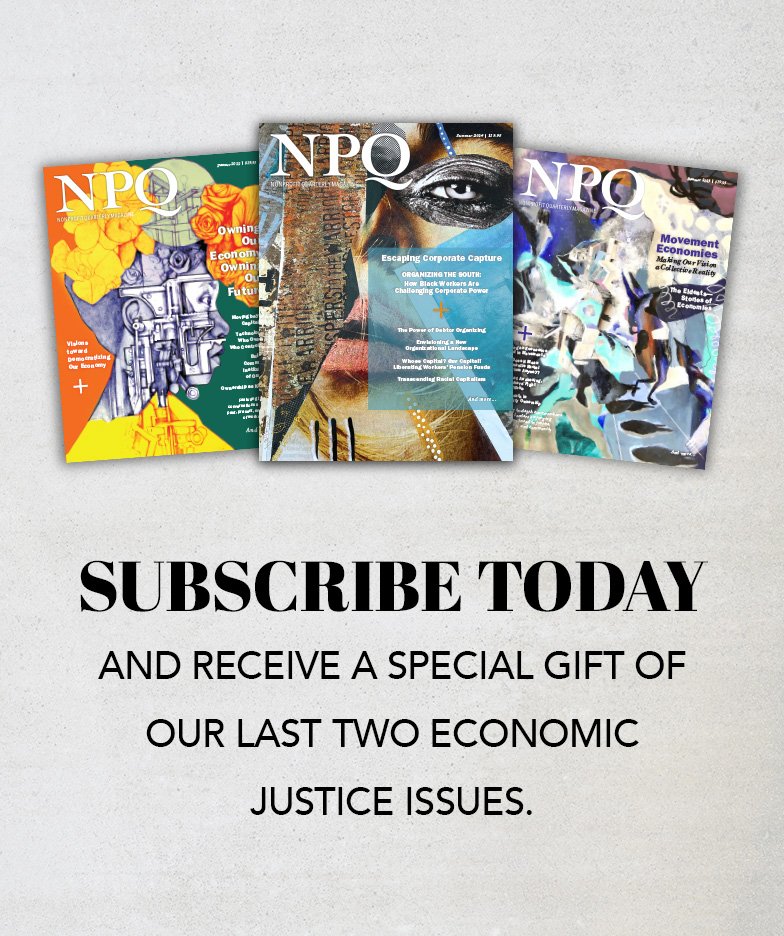June 24, 2013; Hivos Knowledge Programme
Nonprofit Quarterly has had the privilege of publishing the work of Michael Edwards in the past—in particular, an edited version of Just Another Emperor: The Myths and Realities of Philanthrocapitalism, his well respected and truly trenchant critique of the belief held by many that combining business principles (not just in terms of business-like operations, but the application of profit-oriented market ideas) with philanthropic giving and investment will yield a huge leap in social transformation.
His latest paper looks at the relationship of money and social change, suggesting that the sector reject the idea of a “single, ‘best’ approach to social finance, philanthropy and foreign aid…[in favor of] an ecosystem of democratic, institutional and commercial funding models matched to different elements of social change.”
Edwards’s paper, “‘Beauty and the Beast’: Can Money Ever Foster Social Transformation?”, raises important questions for domestic nonprofits as well as international NGOs. Without having to issue a “spoiler alert” for giving away all of his most important findings, a few choice bits are worth highlighting as a taste of the analysis Edwards offers:
Sign up for our free newsletters
Subscribe to NPQ's newsletters to have our top stories delivered directly to your inbox.
By signing up, you agree to our privacy policy and terms of use, and to receive messages from NPQ and our partners.
“Why and when does money represent a problem? …In societies marked out by high levels of inequality, money is both a cause and a consequence of other forms of privilege, an instrument to concentrate wealth or re-distribute resources, centralize power or diffuse it, and subvert or promote democratic choices depending on how it is deployed…And it is these inequalities, privileges and attachments that lie at the heart of the money problem. In market-based societies ‘money talks,’ but it rarely speaks the language of democracy and social justice. Recognizing and acting on this fact is vital, rather than pretending that money is somehow neutral or separated from the broader processes in which it is accumulated, expended and exchanged.”
“Systems out of balance …Market-based funding solutions certainly have their place, but not to the exclusion of other approaches that are more suited to different elements of social change. The danger is that activities that do not fit the criteria required for market-based investment or cannot generate the data required to lever such resources are left unfunded, under-funded, or funded in ways that are unhelpful because they impose too much control—or require too much predictability—in the system. That’s because these dominant approaches are relentlessly donor-centric, emphasizing the assets and ideas that funders bring to the table instead of building the independent agency of those who are working on the ground. As a result, it’s increasingly common for foundations in the USA to close their doors to unsolicited applications and simply select the groups they want to implement the programs the foundation has designed, in a direct reversal of the co-creative relationships that social change demands.”
Laying out a systems approach to social change funding, Edwards outlines the mix of democratic, commercial, and institutional elements of a funding ecosystem. He calls on funders to fund experiments and to support building capacities for systems thinking and learning. In his conclusion, he observes, “In order to build a more positive role for money in the transformation of society, the conversation must be shifted away from its current focus on technical and financial criteria to political and moral questions…[W]hy not advocate for and support a plurality of elements in the ecosystem?”
This is barely a hint of this cogent and challenging paper. Read it and tell us what you think of Edwards’s frame of analysis and articulation of a funding ecosystem.













